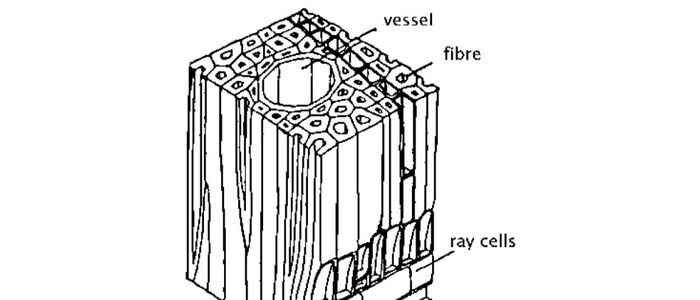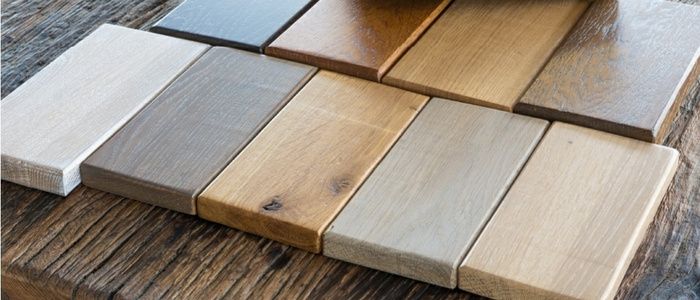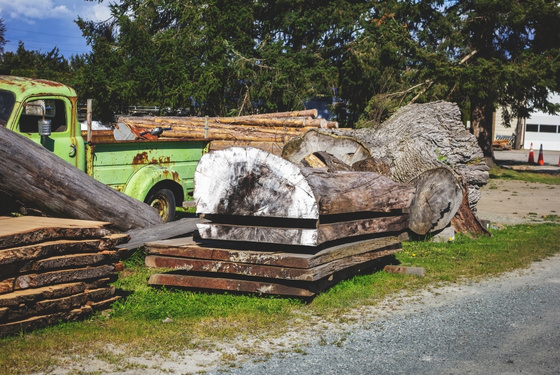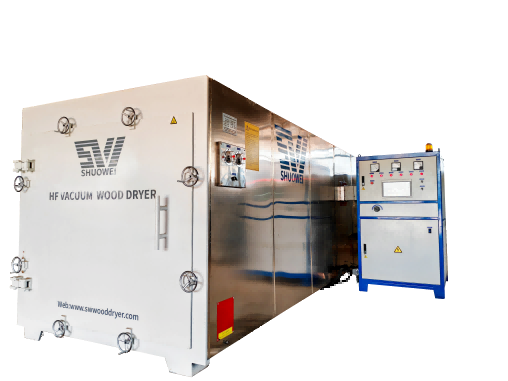In the timber industry, drying wood is the first, and possibly the most crucial, process that occurs in downstream manufacturing following the sawing of the logs. To fully comprehend the critical issues of drying wood, it is essential to provide some details regarding the structure of wood.

A brief overview of the wood’s structure is provided here and focuses on the wood’s design. There is some information regarding the anatomical structure of blackbutt wood because this thesis reports research findings related to drying this wood. Because drying requires water removal, Wood-water relations are explained in the next section. Thirdly, the process of drying lumber is described, along with the various drying techniques. Mechanisms for water movement, the driving forces that drive the activity of moisture, and the directions of the action of humidity are also covered.
The impact of important factors, i.e., temperature, relative humidity, and air circulation, on the wood drying process are examined. The various types of degrading that are anticipated in drying wood are discussed. The causes of drying degrading are described within this article. This section will review the lessons learned and observations made during visits to industrial facilities.
Wood Structure

Wood is porous material comprised of a variety of tiny components or cells, the spaces occupied by air. Wood isn’t an elongated and homogeneous substance like metal. Commercial timbers are generally divided into two categories that are softwoods and hardwoods. This classification isn’t based on the degree of hardness or softness of the case with hardwoods) however, it is based on various botanic sources. “softwood” and “hardwood” can be derived from descriptions used in trade from northwestern Europe. Softwoods originate from the group of plants known as gymnosperms. They are commonly referred to as conifers, or cone-bearing plants generally featuring needle-like leaves and naked seeds (Desch and Dinwoodie, 1996). Conifers that are examples of this include pines, spruces, and those that are the first.
Hardwood

Hardwoods come from the plant family known as angiosperms (two subgroups called monocotyledons and dicotyledons), typically referred to as broad-leaved species, and their seeds are kept inside a case for seeds. The most common examples include the eucalypts (Eucalyptus spp. ) and oak (Quercus spp. ), and southern beeches (Nothofagus spp.). In the International Union for Biological Nomenclature’s name system, every tree has the name of two parts: the species and a species, which is commonly called its scientific designation. There are two other names of the timbers for which they are referred more often. The first is the traditional term (or the local term), and the other is the trade name (accepted and established names in international timber industries). For instance, Pinus sylvestris is the scientific name for Redwood (trade term), locally referred to by Scots pine.
Process of Hardwood

The process of processing hardwoods can be more complicated due to the variety of the resources (mostly of native forests) in dimensions, shape, and shape, species groups and variations in the quality of timber, and the complicated nature of the structure of hardwoods. For instance, the drying of most hardwoods tends to be slower than softwoods, and the most excellent care is required to create high-quality, defect-free timber. Hardwoods tend to be medium to high-density trees between 450 – 1250 kilograms/m3 (actual weight at 12 percent water content).
Structure of Hardwoods

Hardwoods’ structure is complicated because they have more types of cells organized in various designs than softwoods. Regarding microstructure, there are three types of cells in hardwoods. These are vessels (conduction of sap) as well as fibers (strength and mechanical support) and ray cells comprising parenchyma (storage). The majority of the cells of hardwood include vessels and fibers.
Softwood

Softwoods are relatively straightforward in their structure and are mainly (90 percent of volume) comprised of one type of pointed cells that are axially extended and measure between 2 and 5 millimeters in length, referred to as the tracheids. In the manner Desch and Dinwoodie reported, softwoods tend to be low- to medium-density woods in the 350-700 kilograms per cubic meter (essential densities at 12 percent humidity).
Process of Softwood

The processes used to process softwoods (including conversion and drying) are more straightforward, well-established, and implemented by many timber firms worldwide than hardwoods. One reason is the consistency that softwood resources are available (the majority are sourced through plants) and a large amount of research focused on various aspects of the processing of softwood (pines and spruces). The geographical distribution of many softwood resources in the developed nations in Europe and North America is another reason to conduct research due to the financial assistance available.
Wood-Water Relationships

The lumber of trees that are alive and freshly felled wood have significant amounts of water. It often makes up a larger percentage of weight than the actual material. Water profoundly affects wood’s properties, altering its strength, weight, and shrinkage and the potential for attack by certain insects and fungi that cause staining and decay. Wood is distinct from other types of construction materials by the fact that it continuously changes water (water) with the environment in a way that is greater than bricks or concrete.
The wood’s water can be found in two types:

Free water
Most of the water in cell cavities is immune to the intermolecular attraction of cells’ walls and is held only in place by capillary pressure. Therefore, it can be called free water. Free water isn’t in the same thermodynamic condition as liquid water inside a considerable container due to the extra force caused by the capillary effect created by the cell lumens, ranging between 20 and 300 millimeters wide. Additionally, the cell cavity could be a source of water-soluble foreign materials extracted from wood and other wood products, including flavonoids, polyphenolic compound stilbenes, lignans, and tannins.
Bound or hygroscopic waters
Bound water is found in the voids within cells and is more closely connected with the wood’s sub-microscopic form. Wood’s attraction to water is due to its presence in the hydroxyl (OH) groups within the chemical structures and arrangement of hemicelluloses, celluloses, and lignin molecules within the cell wall. The hydroxyl group is positively charged. Water can be described as a liquid that is both polar and composed of a harmful hydroxyl (OH) fraction. The free hydroxyl group in cellulose pulls and holds water via hydrogen bonding. The water contained within the cell wall by hydrogen bonds is known as bound water.
Fibre Saturation Point

After drying, green wood becomes dry. Free water is first released from its cell cavity because less capillary forces than bound water hold it. The bound water then gets eliminated. In addition, many physical properties, like strength and shrinkage, do not suffer due to the elimination of free water because free water is not part of the cell wall. A fiber’s saturation level (FSP) is defined as the level of moisture at which water that is free of charge is not present in the cell cavities. Yet, cell walls are essentially filled by bound water.
Wood Drying
Drying wood (also known as a seasoning in the literature on wood) removes water from the wood as efficiently and with the least amount of damage as possible. The primary goal of seasoning wood is to dry it until it reaches the equilibrium moisture content before use. The dimensional changes that occur by shrinkage occur in the drying process and before use.

The timber is dried according to the median of the maximum and minimal equilibrium moisture contents, which will be achieved by the wood used in various climate conditions. The motion of the parts of the final product, about its dimensions at the manufacturing time, is reduced to a minimum when dry wood is employed. Drying is the initial step in achieving the best possible dimensional stability of any wood used during its use.
Drying timber is one way to add value to sawn products sourced from the wood processing industry.
The benefits of dried wood

- Dry timber is lighter, and the transport and handling costs are lower.
- Dry timber is more critical than green timber for most strength properties.
- Timbers impregnated with preservatives must be adequately dried if penetration is expected to occur, especially in the case of oil-based preservatives.
- When modifying chemically wooden products and wooden products, wood material must dry to a specified moisture level to enable the necessary reactions.
- Dry woodwork with finishes, machines, and glues is superior to green timber. The paints and finish last for longer when applied to dry wood.
- The electric and thermal insulation properties of wood are enhanced through drying.
Take Away
Here is the summation of this blog post: drying your wood varies based on the wood you use, hardwood and softwood. Hardwood requires a more extended period to dry than softwood. And we have also spoken about needing to dry the wood before making use of it in any project, or if you own an enterprise that deals in lumber that requires it, it can increase the quality and cost. If you plan to dry your wood, look up an article on the difference between hardwood and softwood and the various types of wood. You can also reach us. We have a team of exporters experts in this field who are willing to assist you in getting started.




